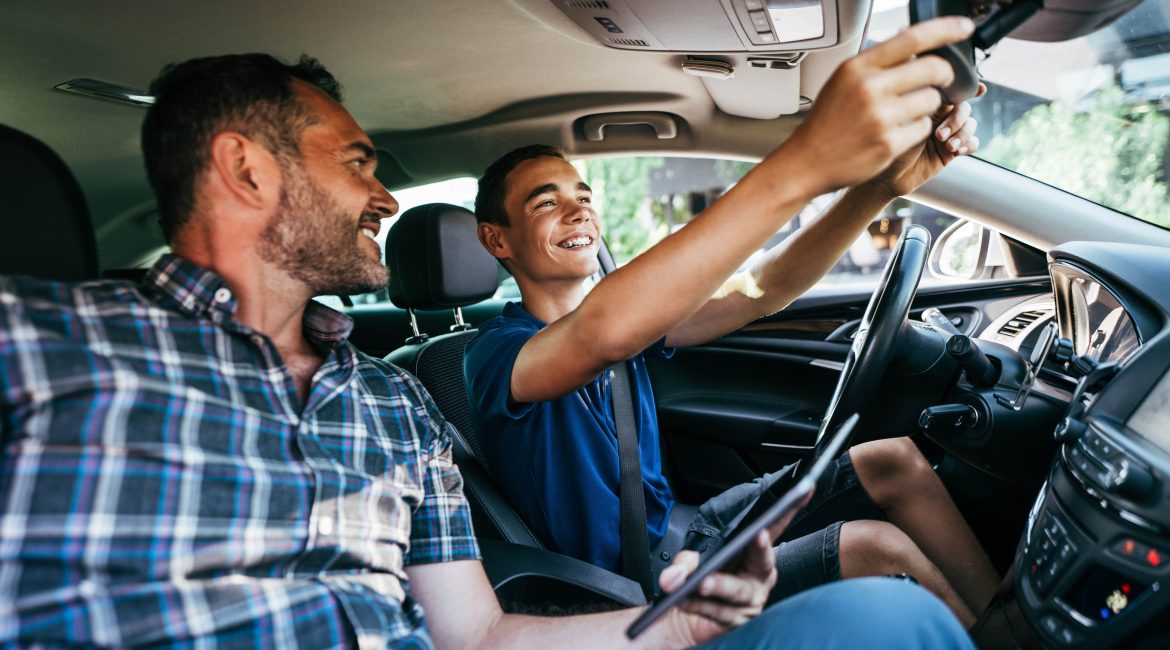The go-to guide for letting go of the wheel and getting your teenager behind one.
The time is finally near –you have found yourself in a position you’ve either longed to be in or you have dreaded for years: how to teach driving to your teen. Now, we’re not sure if you remember how you learned to drive (maybe it’s traumatised you for years) but what we do know is that you can combine how you learned with the fundamental rules of the road to produce a perfectly safe driver.
Related: What to look for when buying a second hand car: 6 safety features
Let’s jump right in at the very beginning. You can’t throw your child into the deep end. Rather, start with the basics.
How to Teach Driving to Your Teen
The Vehicle
New drivers need to have a theoretical understanding of how a car works. That’s why they obviously have to do their learner’s licence. However, doing a test on the car and getting behind the wheel are different experiences. Here’s what they need to get a grasp on:
- All fluids, why they’re important and how to check them
- Vehicle cleanliness and care
- Dashboard warning lights
- How to refuel
- How to effectively use each mirror
- Seat belts and airbags
- Tyre condition, checks and inflation
- Getting the car moving
Okay, now it’s time to get in. Ignore the sweat. We’re joking, it’s really not so bad and if you start slowly; they’ll be driving smoothly on the road before you know it.
This stage is all about teaching them how to make the car do what they need it to do:
- The importance of ignoring and avoiding distraction
- Reversing
- Safe braking
- Safe turns and safe signalling
- Shifting to the correct gears
- Thinking about other cars
After they’ve been in an empty parking lot, you can move into a quiet residential area before moving to busier roads and highways. This is where the learner driver starts to use what they know about being considerate and aware of other drivers:
- Intersections, four-way stops, and right of way
- Defensive driving skills and practising safe driving distances
- Making lane changes
Parking
To be fair, this may be where things get a little tense in the front seats. Parking can be super frustrating, but it is just as important as knowing how to drive on main roads. Without proper parking skills, a learner driver won’t be able to pass their test or be confident behind the wheel.
- Parallel parking (10 deep breaths for this one)
- Angle parking
- 90-degree parking
Keep calm and remember: They haven’t done this before. You’ve been driving for a while (unless you’re a young person reading this trying to teach another young person) so you may have forgotten what it was like before you could drive. It can be easy to wonder “how on earth has this child picked up nothing after all these years in the car?”
Well, they’ve been too busy chatting and singing and sulking to take in three-point turns and safe following distances. This is a completely new experience for you and for them – you’re probably not used to being in the passenger’s seat with an inexperienced driver.
Each child drives differently
Even if you have been in the passenger’s seat with older children and other learner drivers, each child is going to learn the skill differently. Start off where you’re both comfortable, like a parking lot or in your own driveway and take it from there. It’s about learning curves and missing curbs.
They say that you can’t learn to drive by reading a book about it and sure that’s true if you only decide to read but it can’t hurt to start from the very beginning. Get your child acquainted with cars and basic mechanic terminology so they can start building a foundation for caring for their vehicle.
Brush up on your driving
Hate to break it to you, but everyone can use a driving brush up from time to time. As you grow more experienced as a driver, you may become more aware of safe driving techniques and weather conditions, but you may also pick up some dodgy habits.
Remember that you need to set a good example now that you have a trainee under your wing. Plus, they’ll probably start being a little irritating once they think they know it all.
Keep your pocket safe
A part of preparing for getting your teen on the road is getting them on your insurance policy ASAP.
Also, start educating them on the importance of being protected by a comprehensive car insurance policy and why it’s not enough to think that you are a safe driver once you have your licence in your hand.
Read next: How to Pay Less for Car Insurance as a Young Driver: 7 Tips
From the Oneplan team to you, all the best in the passenger’s seat, and remember, 10 deep breaths!
Your Insurance Family,
Oneplan




